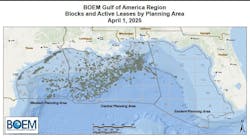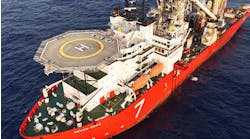Americans have good neighbors in the offshore marketplace
Environmental, social and corporate governance (ESG) seems to be the hottest term in the investment community these days. According to the investment firm Morningstar, inflows into sustainable portfolios grew by 72%, to $71.1 billion, in the second quarter of 2020. As investors are increasingly putting their money to where their values are, the offshore energy industry is excelling under the corporate citizenship and good neighbor frameworks established by ESG investment.
ESG criteria identifies company operations that align with the values held by socially conscious investors. The environmental criteria ask how companies operate as stewards of the environment and nature. The social criteria look at relationships with employees, communities, vendors. The governance criteria examine the corporate structure and transparency of the company, including internal controls and shareholder rights.
The investment community no longer only defines strong investments through cash and other financial metrics alone, but also through positive and sustainable impacts on communities and the environment. In other words, investors are asking, “Is this company a good neighbor?”
This investment transition is occurring at the same time that the offshore energy industry is leading an energy transition. It is not a coincidence that eight of the 10 biggest US sustainable funds are invested in oil and natural gas companies. As both the finance and energy sectors transform, their alignment is becoming increasingly apparent.
In a world where 1 billion people lack access to electricity while global energy demands are still expected to increase 25% by 2040, the offshore energy industry is finding ways to meet the world’s energy needs in a sustainable manner.
The anchor of American energy production – the Gulf of Mexico – produces vast quantities of energy with an astonishingly small environmental footprint. Thanks to the offshore oil and natural gas production process, flaring is minimized and there is world-class water use and management. Overall, Gulf of Mexico oil and gas production has a carbon intensity one-half of other producing regions. Deepwater oil and gas production has the lowest carbon emissions per barrel of oil produced of any type of oil and natural gas production.
Technological performance is transforming how energy is produced in the Gulf of Mexico. From space satellites to subsea ROVs, remote sensing technologies are adding new dimensions of information gathering. Artificial intelligence and machine learning are being incorporated to almost everything, increasing the speed, accuracy and distribution of information while shrinking the operational footprint of projects and increasing safety performance.
Beyond having a small and shrinking environmental footprint, the US offshore energy industry is tangibly improving the lives of folks onshore in a unique way.
Revenues from offshore oil and gas fund virtually the entire Land & Water Conservation Fund. In its 55-year history, the LWCF has provided more than $4 billion in funding for more than 40,000 conservation and environmental programs. Every county in each US state and territory, as well as the District of Columbia, has received funds. The recently passed bipartisan Great American Outdoors Act permanently funds the LWCF and boosts maintenance funding of our treasured national parks through offshore revenues.
The Land & Water Conservation Fund is not just limited to America’s wild frontier areas. The Outdoor Recreation Legacy Partnership Program uses LWFC funds to build new parks or improve existing ones in economically disadvantaged urban areas throughout the country. More than $28 million has been distributed to 50 communities since the program was created in 2016. Each park that is built or improved becomes the safe oasis many communities need.
The energy companies that support the Gulf of Mexico oil and gas sector are many of the same companies investing in and poised to build out the US offshore wind sector. This added benefit means that the energy transition and the advancement of US offshore wind will in many respects depend upon the expertise and ingenuity of the project development, marine service vessel, marine construction, and subsea engineering companies and personnel currently responsible for the safe and responsible oil and gas development in the Gulf. The continued success of the Gulf of Mexico means the continued success of new offshore wind projects.
The actions the offshore industry is taking to produce safer, more reliable and more socially and environmentally conscious energy is nothing new. ESG is not a trigger word or a frightening acronym. Our industry is embracing ESG and what it stands for because we are already committed to being good neighbors. While increasing the availability of affordable, reliable, and responsible energy, our industry is investing and supporting communities and the environment. The offshore industry is truly leading by example.
Erik Milito
President
NOIA




